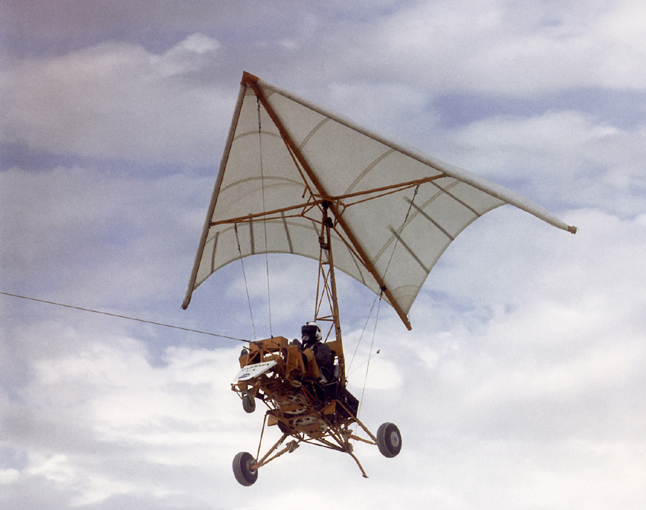Space History Photo: Paresev 1-B in Tow Flight

In this historical photo from the U.S. space agency, the Paresev experimental aircraft being towed in January of 1964.
A normal flight was a takeoff on the Rogers Dry Lakebed at Edwards Air Force Base and a circling flight path skirting the lake edges to insure a landing on the lakebed in the event of a towline failure. Release altitude was normally 10,000 to 13,000 feet. Data was obtained on the glide part of the flight. By maintaining simplicity during construction, it was possible to make control and configuration changes overnight and in many instances, in minutes.
Each weekday, SPACE.com looks back at the history of spaceflight through photos (archive).
Get the Space.com Newsletter
Breaking space news, the latest updates on rocket launches, skywatching events and more!
Join our Space Forums to keep talking space on the latest missions, night sky and more! And if you have a news tip, correction or comment, let us know at: community@space.com.

The National Aeronautics and Space Administration (NASA) is the U.S. government agency in charge of the civilian space program as well as aeronautics and aerospace research. Founded in 1958, NASA is a civilian space agency aimed at exploring the universe with space telescopes, satellites, robotic spacecraft, astronauts and more. The space agency has 10 major centers based across the U.S. and launches robotic and crewed missions from the Kennedy Space Center in Cape Canaveral Florida. It's astronaut corps is based at the Johnson Space Center in Houston. To follow NASA's latest mission, follow the space agency on Twitter or any other social channel, of visit: nasa.gov.









